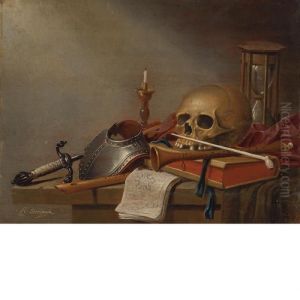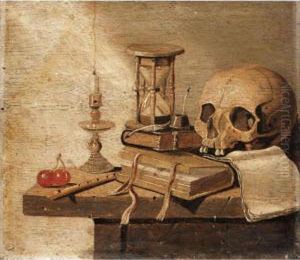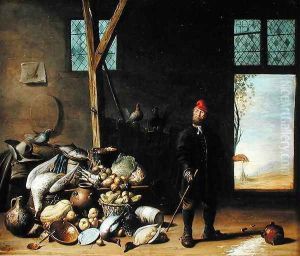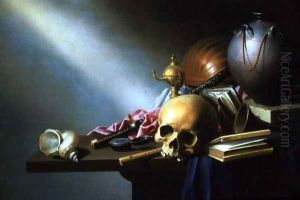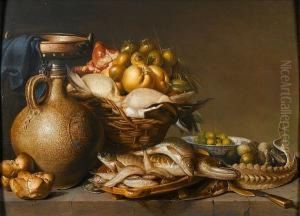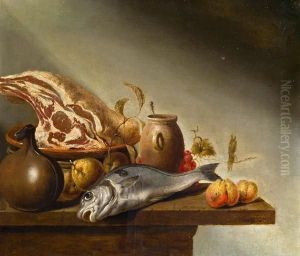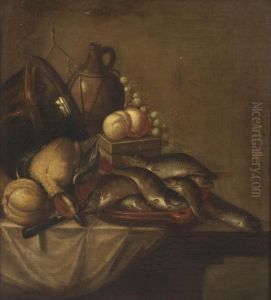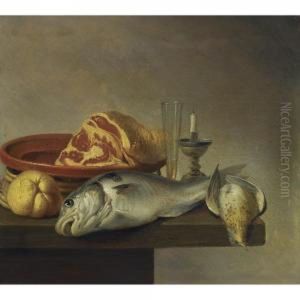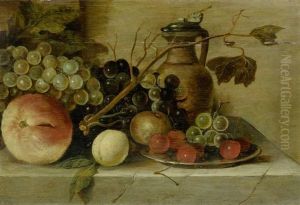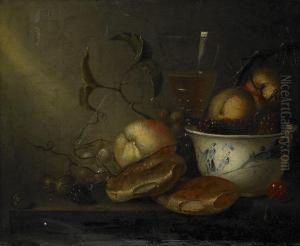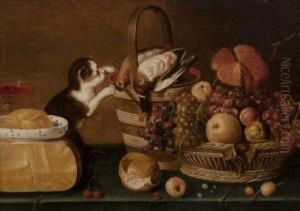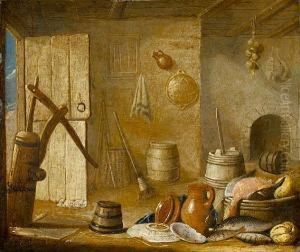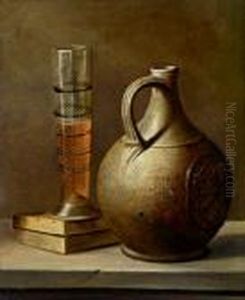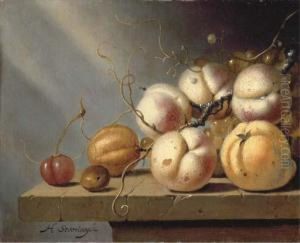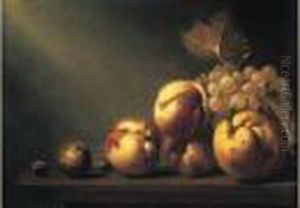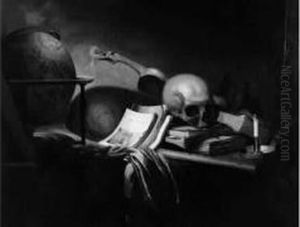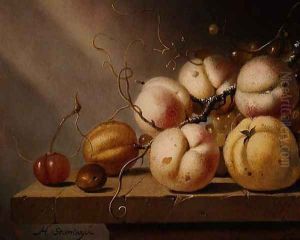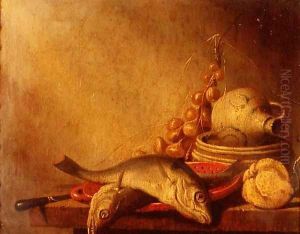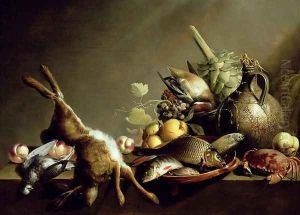Harmen van Steenwyck Paintings
Harmen van Steenwyck was a Dutch Golden Age painter, known for his still life paintings, particularly those featuring vanitas themes. Born in 1612 in Delft, Netherlands, he was part of a family of painters; his brother Pieter was also a painter. Harmen was influenced by the still life works of his contemporary Pieter Claesz, and he became known for his meticulous style and the symbolic content of his artworks.
Harmen van Steenwyck's works are characterized by their use of light and shadow to create a dramatic effect, a technique known as chiaroscuro. He often depicted rotting fruit, skulls, extinguished candles, and other objects that symbolize the transience of life and the futility of worldly pursuits, which is a hallmark of vanitas paintings. These works served as a moral reminder to viewers of the inevitability of death and the importance of living a virtuous life.
Despite the somber themes, van Steenwyck's technical skill and his ability to render textures and surfaces with great detail were highly admired. His compositions are often simple yet powerful, with a strong emphasis on the contrast between the objects and the dark background, which helps to highlight the message of the vanitas theme.
Harmen van Steenwyck's paintings were collected by connoisseurs and had a significant influence on the development of still life painting in the Netherlands. Sadly, little is known about his personal life, and his works were often overshadowed by those of more famous contemporaries. He passed away in 1656, leaving behind a small but important body of work that continues to be studied and appreciated for its artistic and philosophical depth.
